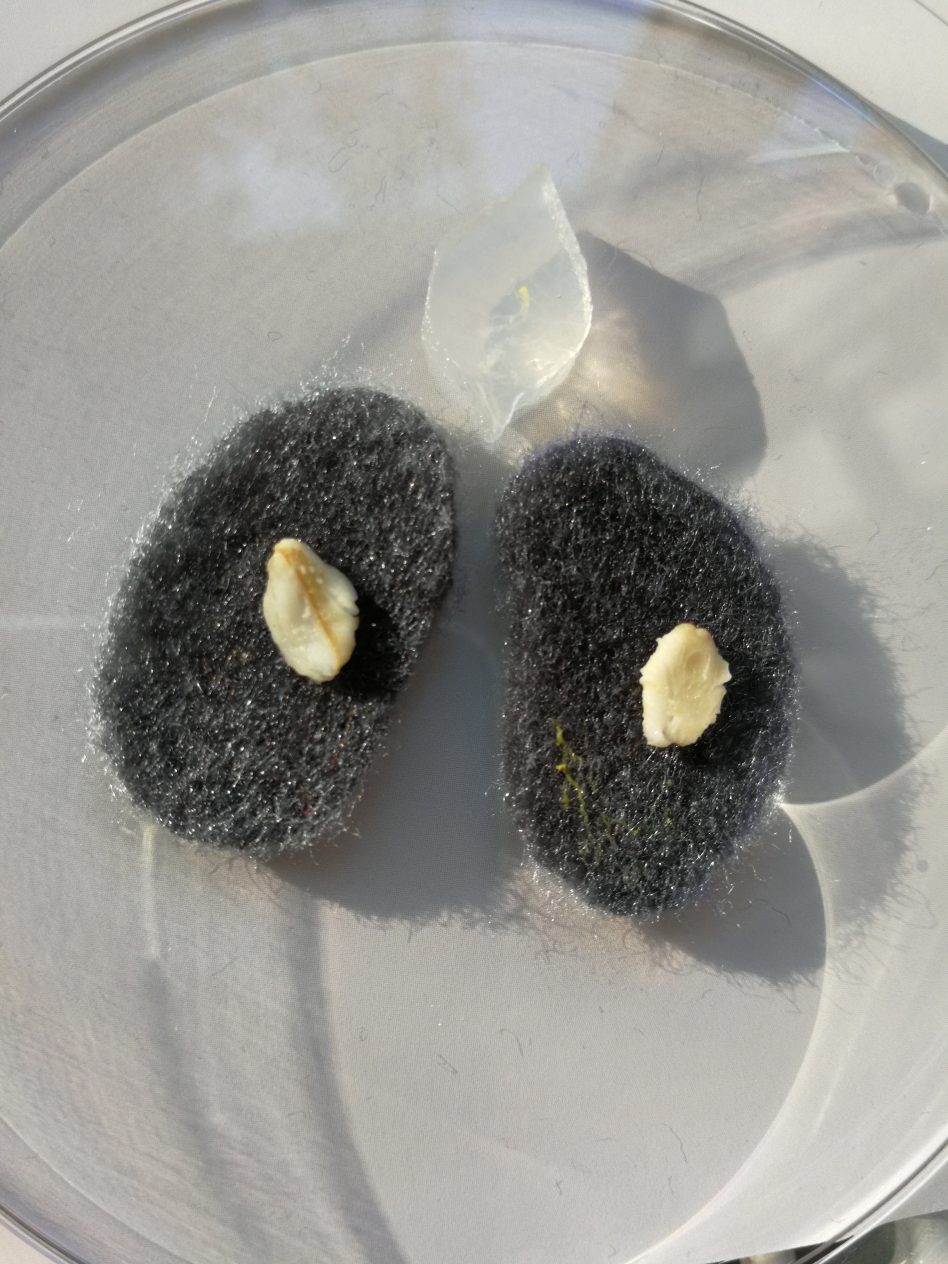Last weekend I went to the workshop SWARM | CELL | CITY by Heather Barnett at Art Laboratory as part of their exhibition “Nonhuman Networks”. Heather is an artist who works with slime mould. As an introduction she gave a presentation about slime mould: how it behaves, how it moves, how it communicates, in what conditions it thrives or withers, and what it likes or dislikes. We learnt, for example, that slime mould likes to eat oats and doesn’t like salt. Even though slime mould, as an amoeba, has no central nervous system or organs, it displays the same intelligent behavior as other living beings. For example, when one repeatedly exposes the slime mould to dry, cold air – unfavourable conditions for slime mould – it slows down. If one does this repeatedly, say, at an interval of 30 or 60 minutes, the slime mould slows down at the same respective interval with and without the dry and cold air stimulus. A classic case of behaviour psychology, except that the slime mould has no brain.
Maybe our idea of the brain as a centre for information processing and transmission is just a story we tell ourselves because we‘re incapable of non-hierarchical thinking. Maybe we call creatures „low“ because they are non-hierarchical and don‘t tell stories. What if there is no beginning, middle and end but only pulsation, oscillation, yes, flow? I‘m perhaps not even whatever I think I am, but flow, just flow… In any case, from Heather‘s presentation I was utterly convinced of the slime mould‘s infinite wisdom and intelligence.
In the practical part of the workshop, Heather gave us pieces of felt and slime mould on agar agar to create an environment in a Petri dish for the slime mould to do its thing. As an incentive for the slime mould to move, we added oat flakes. One could also add salt or chili if one wanted the slime mould to steer away from a certain part of the Petri dish world.
I cut out two lung shaped pieces of felt, added some moisture and placed an oat flake in the centre of each lung shape. In the middle above the two lung shapes I placed a piece of agar agar with the slime mould on it. Believing in the slime mould‘s infinite wisdom and intelligence, I decided to ask it for guidance. As I thought about how to address the slime mould, my language became more formal and a touch old-fashioned: „Please show me the way to the desolate destination“, I wrote, to my surprise, and in somewhat ornate letters. I cut out the sentence with rounded edges, put the lid on the Petri dish and placed the writing on the lid, so that it was facing the lung shapes.
When we were finished, Heather told us to wrap the Petri dish in tinfoil, to make it nice and dark for the slime mould. Then we left the slime mould undisturbed for a couple of hours.
When I opened my Petri dish, at first I didn’t see any sign of slime mould but Anna, another participant, pointed out to me the fine yellow threads and handed me an eyeglass. The slime mould had wandered – seemingly having bypassed the oat flake – to the medial lower lobe of the left lung. Every other part of the lung shapes was untouched. I felt the slime mould had given me more than guidance, it had given me a divinatory diagnosis. It was now up to me to interpret it.
Now, one could dismiss my experience as a paradigm of anthropocentric fuzziness but I think that the slime mould‘s infinite wisdom and intelligence, in combination with my absolute faith in it and the internal logic of the question, brought about a communication between us. What the communication means is another matter, to me as a human being the communication was meaningful, but the slime mould may not be into meaning. It may not need meaning at all, just as it needs no hierarchy or guidance.
This lead me to the question what I had to offer the slime mould in return for its stupendous service. It had given so much to me but I felt I had nothing to contribute to the slime mould. I‘m less than an oat flake.
Still the desire was there, and, being into poetry, I could offer a poem. So I recited Emily Dickinson‘s poem Nr 1176 – which I‘d read that morning and had found strangely apt to what we were exploring in the workshop – to the slime mould, to this other being from a seemingly distant world, at least, from a world that has been construed as distant.
We never know how high we are
Till we are asked to rise;
And then, if we are true to plan,
Our statures touch the skies-
The Heroism we recite
Would be a daily thing,
Did not ourselves the Cubits warp
For fear to be a King-
At the end of the workshop, there was, of course, the question what would now happen with our slime mould samples. Would we keep the slime mould as a pet, would we discard it, would we leave it behind at Art Laboratory etc.? It was clear to me that I was going to place the slime mould in an agreeable environment in the forest where I live. When I got home I dug a little hole by a pine tree and placed the two lung shapes with the agar agar in the earth together with my request and a handwritten copy of Emily Dickinson‘s poem. I covered it with earth. Moist and dark. Infinite possibilities. Thank you, slime mould.

